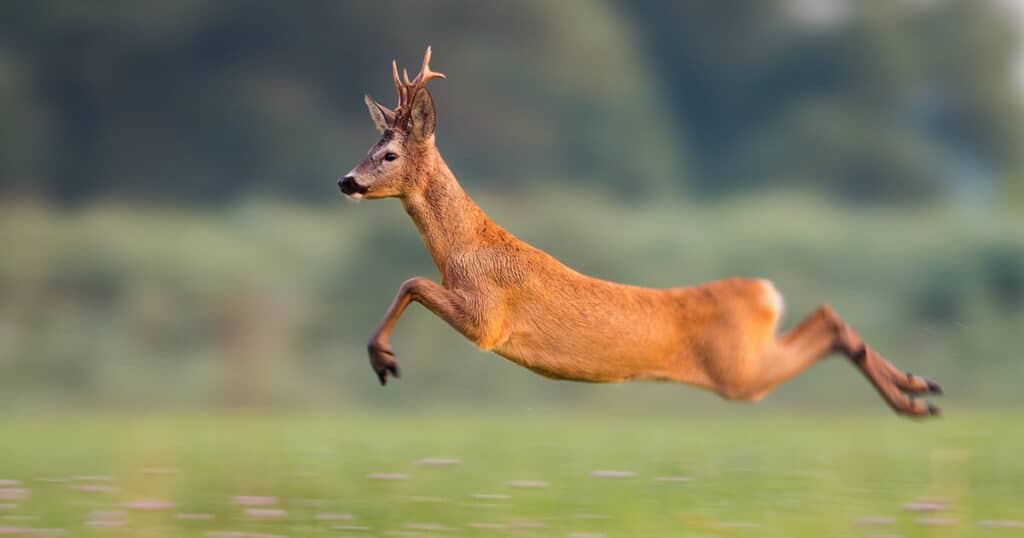Introduction
Deer are known for their impressive speed and agility, making them one of the fastest land animals. Their ability to run at high speeds is a crucial survival mechanism, allowing them to escape predators and navigate through their natural habitats. In this article, we will explore how fast deer can run, the factors that influence their speed, and the adaptations that enable their remarkable sprinting abilities.
Deer Species and Their Top Speeds
There are several species of deer, each with its own unique characteristics and top speeds. Here are some of the most common deer species and their maximum recorded speeds:
| Deer Species | Top Speed (mph) |
|---|---|
| White-tailed Deer | 30-35 mph |
| Mule Deer | 35-45 mph |
| Red Deer | 35-40 mph |
| Fallow Deer | 30-35 mph |
| Sika Deer | 30-35 mph |
It’s important to note that these speeds are estimates based on various studies and observations, and individual deer may vary in their top speeds depending on factors such as age, health, and the specific situation.
Factors Influencing Deer Speed
Several factors contribute to a deer’s ability to run at high speeds:
Anatomy and Physiology
Deer have a lightweight, streamlined build that minimizes air resistance and maximizes speed. Their long, slender legs are equipped with strong muscles and tendons that provide the power and flexibility needed for sprinting. Additionally, deer have a low center of gravity, which helps them maintain balance and stability at high speeds.
Hoof Structure
Deer hooves are designed for traction and stability on various terrains. The split hoof structure allows for a firm grip on the ground, enabling deer to push off with great force and change direction quickly.
Environmental Factors
The terrain and environmental conditions can also affect a deer’s running speed. Deer can run faster on flat, open areas with minimal obstacles, while uneven or slippery surfaces may slow them down.
Motivation and Stress Response
When faced with a threat, such as a predator, deer can reach their top speeds due to the adrenaline rush and the need to escape. This stress response triggers physiological changes that enhance their speed and agility.
Adaptations for High-Speed Running
Deer have evolved several adaptations that enable them to run at high speeds:
Muscle Fiber Composition
Deer have a higher proportion of fast-twitch muscle fibers compared to slow-twitch fibers. Fast-twitch fibers are responsible for generating bursts of power and speed, allowing deer to accelerate quickly and maintain high speeds for short periods.
Respiratory and Cardiovascular Systems
Deer have efficient respiratory and cardiovascular systems that can supply oxygen to their muscles during intense physical activity. Their large lungs and strong hearts enable them to deliver oxygen-rich blood to their muscles, reducing the buildup of lactic acid and delaying fatigue.
Skeletal Structure
The deer’s skeletal structure is optimized for high-speed running. Their long, slender legs provide a longer stride length, allowing them to cover more ground with each step. Additionally, the deer’s spine is flexible, enabling them to maintain balance and stability at high speeds.
Hunting Strategies and Deer Speed
Deer’s speed and agility are crucial factors in their survival and interactions with predators. Predators, such as wolves and coyotes, often rely on endurance hunting strategies, chasing their prey over long distances until the deer becomes exhausted. However, deer can outrun most predators in short sprints, using their speed to escape immediate danger.
Conservation and Deer Speed
Deer populations are affected by various factors, including habitat loss, hunting, and vehicle collisions. Understanding deer speed and behavior is essential for developing effective conservation strategies and mitigating human-wildlife conflicts. For example, installing wildlife crossings and reducing speed limits in areas with high deer activity can help reduce the risk of vehicle collisions.
FAQs
Q: What is the fastest recorded speed for a deer?
The fastest recorded speed for a deer is 55 mph, which was achieved by a white-tailed deer in a controlled setting. However, most deer can reach top speeds between 30-45 mph in their natural habitats.
Q: Can deer maintain their top speed for long distances?
No, deer can only maintain their top speed for short bursts, usually less than a minute. After this, they become fatigued and need to rest.
Q: Are deer faster than horses?
In general, deer are faster than horses over short distances. However, horses have better endurance and can maintain a steady pace for longer periods.
Q: Do all deer species have the same top speed?
No, different deer species have varying top speeds depending on their size, build, and habitat. For example, mule deer tend to be faster than white-tailed deer.
Q: Can deer change direction quickly while running?
Yes, deer can change direction rapidly due to their flexible skeletal structure and strong muscles. This agility helps them navigate through their habitat and evade predators.
Conclusion
Deer are remarkable animals known for their impressive speed and agility. Their ability to run at high speeds is a crucial survival mechanism that helps them escape predators and navigate through their natural habitats. Understanding deer speed and the factors that influence it is essential for wildlife conservation and mitigating human-wildlife conflicts. By appreciating the adaptations that enable deer to run at such high speeds, we can gain a deeper understanding and respect for these fascinating creatures.For more information on deer biology and behavior, you can refer to the National Park Service’s page on white-tailed deer.



